|
Cantata BWV 9
Es ist das Heil uns kommen her
Examples from the Score with Commentary |
|
Mvt. 1 Chorus | Mvt. 3 Tenor Aria | Mvt. 5 Duet | Mvt. 6 Recitative |
| |
|
Mvt. 1 Chorus |
|
Smend explains how the flute (the upper staff) began the mvt. in the main tonality (E major) established for this mvt., but later it changes to minor at the point where one can recognize that it is derived from the beginning of the chorale, "Ich ruf zu dir, Herr Jesu Christ," a chorale designated to be sung at this time of the church year. The dotted lines show the points of similarity, the flute now providing an elaboration or variation of the chorale melody. This was the type of 'melody transformation' in which Bach excelled. |
|

|
|
You might consider it a sheer coincidence that the notes marked with an 'x' in the basso continuo just happen to be the incipet of the famous Christmas chorale by Luther: "Vom Himmel hoch, da komm ich her" (From heaven above, I come to you). Noteworthy is the fact that this passage also appears in conjunction with the last line of the chorale, "Es ist das Heil uns kommen her," where the words, "Er ist der Mittler worden" (He ["Christ] has become our mediator.") With this last line it appears 3 times. In the entire mvt. this Christmas chorale appears 10 times, a reference to the fact that, through the appearance of the Son of God, the Law (Old Testament) has been fulfilled. |
|

|
|
Although most commentators find little or no connection between the chorale melody and the accompanying vocal and instrumental parts, if you examine the pattern closely in the A,T,B vocal parts, they loosely reecho the choral melody (cantus firmus) above in the soprano part. |
|
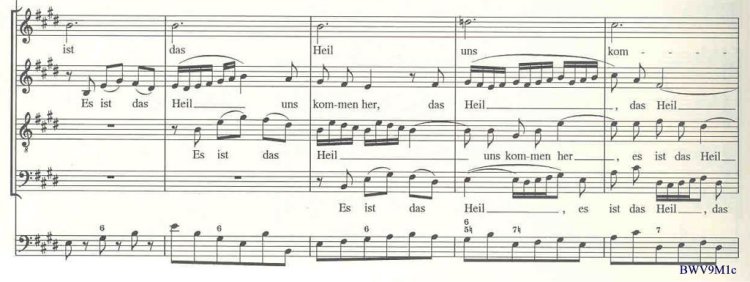
|
|
Here it appears as though the accompanying entries are the upside-down version of the chorale melody (cantus firmus) above. Perhaps Bach derived the thematic material for the accompanying parts from this portion of the choral melody? |
|
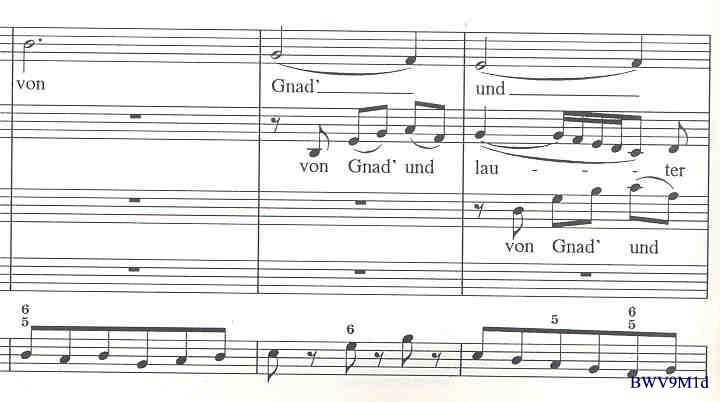
|
|
A wonderful change of pace occurs just once on the words, "Er hat g'nug für uns all getan." ("He has done enough for all of us.") These words, already difficult to sing evenly, receive shortened note values (very much the same way H/L prefer to sing them generally, except that Bach rarely does it that way and if he desires this effect, he will write it out this way.) It is as though Bach recognized the consonantal and almost imperative power of the word, "g'nug," ("enough") and decided to emphasize these qualities even more. For me, this is a very special part of the 1st mvt. that I always listen for. |
|
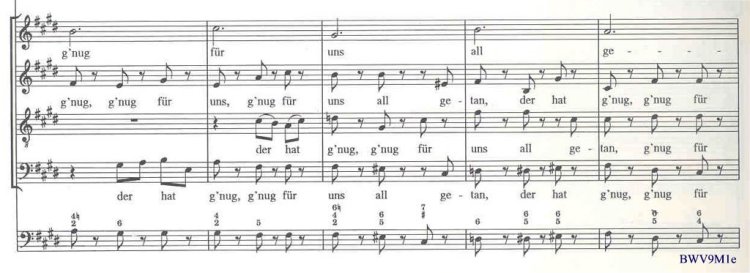
|
| |
|
Mvt. 3 Tenor Aria |
|
Here is Bach's 'doodle' at the bottom of a previous page. Note that there is no key or time signature. |
|

|
|
Here is the final version in the violin part at the beginning of the mvt. Notice also the unusual time signature. |
|
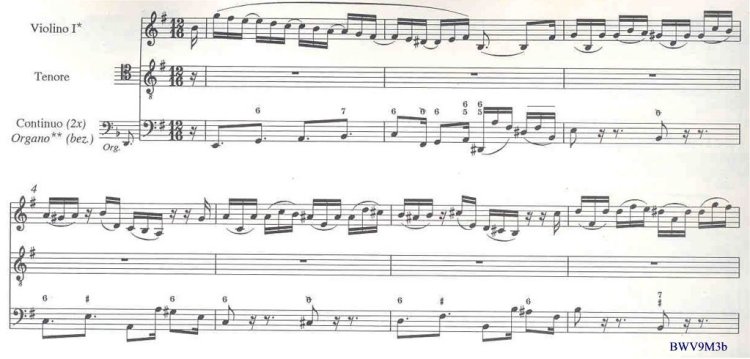
|
| |
|
Mvt. 5 Duet |
|
Smend points out that the main theme of this mvt. is derived from another chorale. Because Luther had indicated that Lutherans are enabled to have faith in Christ through the enlightenment of the Holy Spirit, Bach has based his main theme on the incipet of the famous chorale, "Komm, Heiliger Geist," in which Christianity requests help from the Holy Spirit. The theme/chorale reference appears 12 times in this mvt., this fact having some esoteric connection with the church (the 12 tribes of Israel? The 12 disciples? Humanity divided into the 12 signs of the Zodiac? The 12 knights of King Arthur's Round Table? etc. etc.) |
|

|
| |
|
Mvt. 6 Recitative |
|
Here, in this facsimile, Bach's autograph score begins to look more like Beethoven's. Bach has given up on the corrections (version 2 of this mvt.) and decides not to simply copy this version elsewhere, but rather make further corrections before writing down the 3rd and final version. |
|

|
|
This is part of the 1st version of this recitative. |
|

|
|
This is the second version. |
|
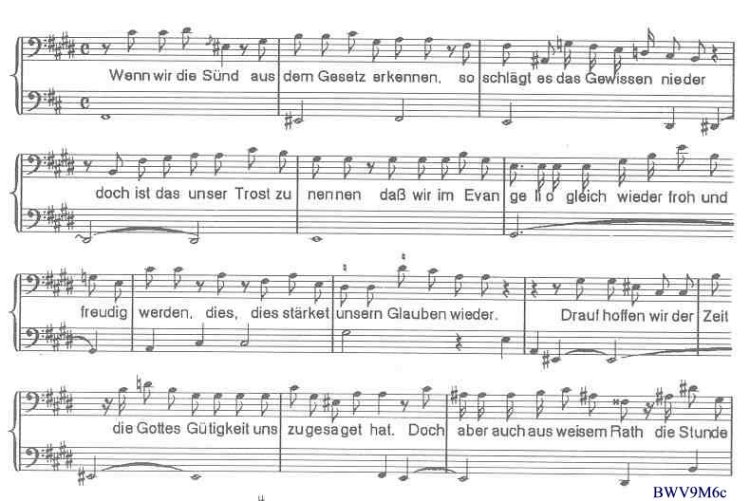
|
|
And this is the final version as it appears in the NBA. |
|

|
| |
|
Examples extracted from "J.S.Bach Kirchenkantaten" by Friedrich Smend (1948) and NBA I/17.2 (1993) and the KB of the NBA
Contributed by Thomas Braatz (July 30, 2001) |